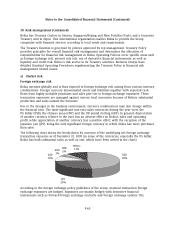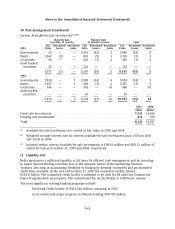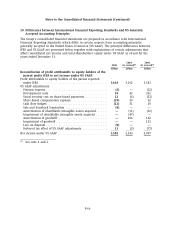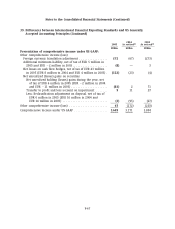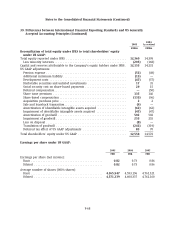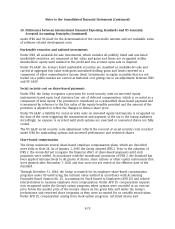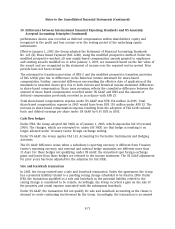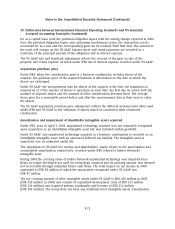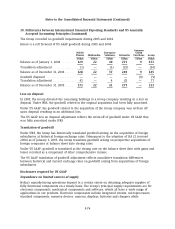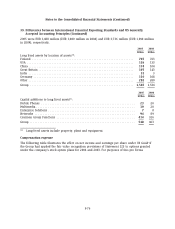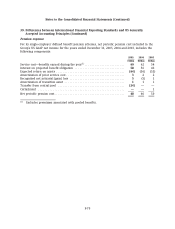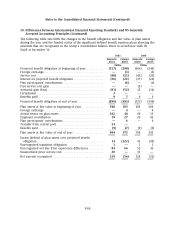Nokia 2005 Annual Report Download - page 208
Download and view the complete annual report
Please find page 208 of the 2005 Nokia annual report below. You can navigate through the pages in the report by either clicking on the pages listed below, or by using the keyword search tool below to find specific information within the annual report.Notes to the Consolidated Financial Statements (Continued)
39. Differences between International Financial Reporting Standards and US Generally
Accepted Accounting Principles (Continued)
under IFRS and US GAAP for the determination of the recoverable amount and net realizable value
of software related development costs.
Marketable securities and unlisted investments
Under IFRS, all available-for-sale investments, which includes all publicly listed and non-listed
marketable securities, are measured at fair value and gains and losses are recognized within
shareholders’ equity until realized in the profit and loss account upon sale or disposal.
Under US GAAP, the Group’s listed marketable securities are classified as available-for-sale and
carried at aggregate fair value with gross unrealized holding gains and losses reported as a
component of other comprehensive income (loss). Investments in equity securities that are not
traded on a public market are carried at historical cost, giving rise to an adjustment between IFRS
and US GAAP.
Social security cost on share-based payments
Under IFRS, the Group recognizes a provision for social security costs on unvested equity
instruments based upon local statutory law, net of deferred compensation, which is recorded as a
component of total equity. The provision is considered as a cash-settled share-based payment and
is measured by reference to the fair value of the equity benefits provided and the amount of the
provision is adjusted to reflect the changes in Nokia’s share price.
Under US GAAP, a liability for social security costs on unvested equity instruments is recognized on
the date of the event triggering the measurement and payment of the tax to the taxing authority.
Accordingly, no expense is recorded until stock options are exercised or nonvested shares are fully
vested.
The US GAAP social security costs adjustment reflects the reversal of social security costs recorded
under IFRS for outstanding options and unvested performance and restricted shares.
Share-based compensation
The Group maintains several share-based employee compensation plans, which are described
more fully in Note 24. As of January 1, 2005 the Group adopted IFRS 2. Prior to the adoption of
IFRS 2, the Group did not recognize the financial effect of share-based payments until such
payments were settled. In accordance with the transitional provisions of IFRS 2, the Standard has
been applied retrospectively to all grants of shares, share options or other equity instruments that
were granted after November 7, 2002 and that were not yet vested at the effective date of the
standard.
Through December 31, 2004, the Group accounted for its employee share-based compensation
programs under US GAAP using the intrinsic value method in accordance with Accounting
Principles Board Opinion No. 25, Accounting for Stock Issued to Employees (APB 25) and related
interpretations to measure employee stock compensation. Under APB 25, compensation expense
was recognized under the Group’s option programs when options were awarded at an exercise
price below the market price of the Group’s shares on the grant date and under the Group’s
performance and restricted share programs as they were accounted for as variable award plans.
Under APB 25, compensation arising from stock option programs, restricted shares and
F-70


